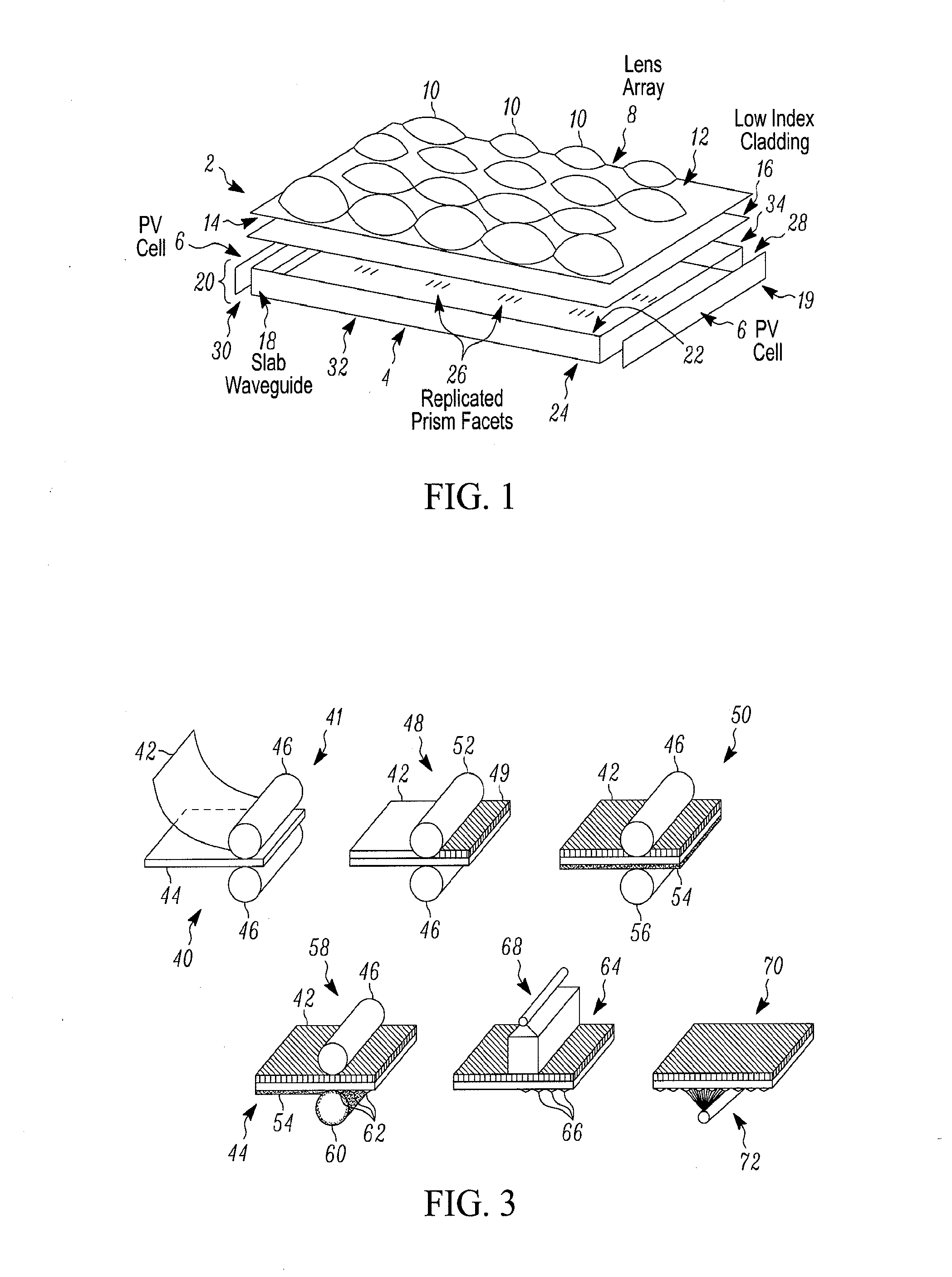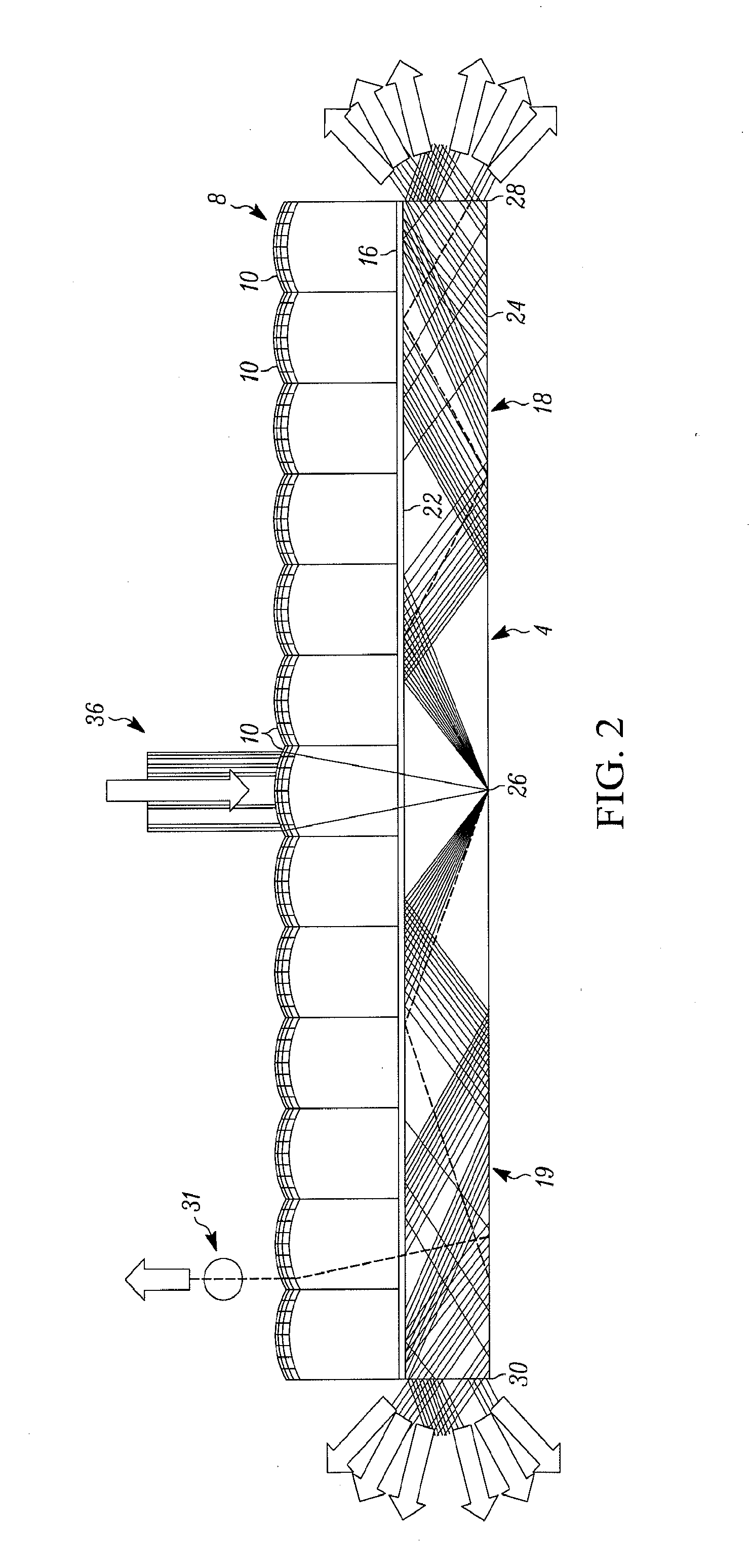System and method for solar energy capture and related method of manufacturing
a solar energy and manufacturing technology, applied in the field of solar energy systems, can solve the problems of high efficiency pv cells, inefficient stationary solar concentration devices, and high cost of pv cells, and achieve the effect of higher efficiency
- Summary
- Abstract
- Description
- Claims
- Application Information
AI Technical Summary
Benefits of technology
Problems solved by technology
Method used
Image
Examples
Embodiment Construction
Referring to FIG. 1, an exploded view of a solar energy system 2 in accordance with one embodiment of the present invention is provided. As shown, the solar energy system 2 includes a solar concentration section 4 and multiple PV cells 6. The solar concentration section 4 can also be referred to as a micro-optic concentration section in view of the small size of the structure and its components relative to the overall physical structure of the system 2. More particularly as shown, the solar concentration section 4 includes a lens array 8 having multiple lenses 10 arranged substantially along a plane. The lenses 10, which in the present embodiment are formed by embossing the lenses on a surface of glass or plastic superstrate, can be referred to as microlenses, again in view of their size relative to the overall physical structure of the system 2. Sunlight (or possibly other incoming light) is incident upon an outer surface 12 of the lens array 8, and exits the lens array by way of a...
PUM
| Property | Measurement | Unit |
|---|---|---|
| angle | aaaaa | aaaaa |
| angle | aaaaa | aaaaa |
| angle | aaaaa | aaaaa |
Abstract
Description
Claims
Application Information
 Login to View More
Login to View More - R&D
- Intellectual Property
- Life Sciences
- Materials
- Tech Scout
- Unparalleled Data Quality
- Higher Quality Content
- 60% Fewer Hallucinations
Browse by: Latest US Patents, China's latest patents, Technical Efficacy Thesaurus, Application Domain, Technology Topic, Popular Technical Reports.
© 2025 PatSnap. All rights reserved.Legal|Privacy policy|Modern Slavery Act Transparency Statement|Sitemap|About US| Contact US: help@patsnap.com



